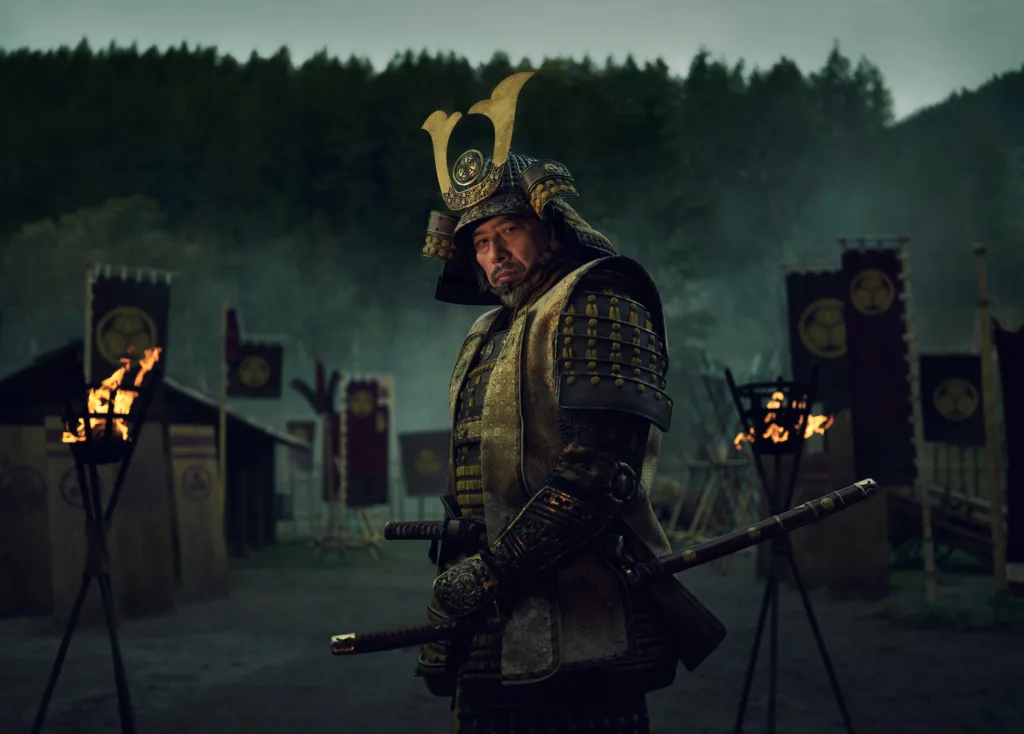The Emmy-winning phenomenon Shogun may finally return to its cultural homeland as producer Miyagawa Eriko reveals ambitious plans to bring future seasons to Japan. Speaking at the Tokyo International Film Festival, the acclaimed producer expressed strong interest in filming upcoming seasons in Japan, marking a potential homecoming for the series that captivated global audiences while being filmed thousands of miles away from its authentic setting.
Table of Contents
The Producer’s Vision: Bringing Shogun Home
During a candid industry panel at the Tokyo International Film Festival, Miyagawa Eriko made headlines when asked about shooting subsequent Shogun seasons in Japan. “It’s not up to me, but I would love to, personally, and I will always be pitching some ideas and opportunities,” she revealed. “I’m doing that now, I’ll be doing that throughout. Season 3, we don’t have scripts, we don’t know what it is yet. But, I’d love to.”

This passionate declaration represents more than just wishful thinking—it’s a strategic vision that could transform both the series and Japan’s film industry landscape. The producer’s commitment to advocating for Japan as a filming location demonstrates the deep cultural connection between Shogun and its authentic Japanese setting.
Why Shogun Didn’t Film in Japan Initially
The original decision to film Shogun in Vancouver wasn’t made lightly. The production team desperately wanted to shoot in Japan for the first season, but multiple factors converged to make it impossible. “We very much wanted to shoot here, but it was height of COVID,” Miyagawa explained, revealing how the pandemic derailed their initial plans. “Creators Justin Marks and Rachel Kondo couldn’t come to Japan to scout, so unfortunately we had to give up.”
COVID-19 Impact on Production Planning
| Challenge | Impact on Shogun | Alternative Solution |
|---|---|---|
| Travel Restrictions | Creators couldn’t scout locations | Remote planning insufficient |
| International Crew Movement | Limited personnel mobility | Local Vancouver crew hired |
| Health Protocols | Uncertain filming conditions | Stable Vancouver environment |
| Timeline Pressure | Delayed pre-production | Immediate Vancouver availability |
However, the pandemic was only one piece of the puzzle. Infrastructure limitations and practical considerations ultimately pushed the period drama to Vancouver, where extensive soundstage space, backlots, and suitable locations for building fishing villages and castle walls were readily available.
Infrastructure Challenges: The Numbers Game
Miyagawa candidly acknowledged that “where we would base the bulk of our shoot was always going to be a numbers decision.” The scale of Shogun’s production requirements highlights critical gaps in Japan’s film infrastructure that must be addressed to attract large-scale international productions.
Vancouver’s appeal proved undeniable for practical reasons. “Infrastructure was there, housing options were really broad, and the big studio was maybe half an hour, 45 minutes drive away, and it was very compact and effectively supported our needs,” the producer explained.
Production Infrastructure Comparison
| Requirement | Vancouver Advantages | Japan’s Current Limitations |
|---|---|---|
| Soundstages | Large, Hollywood-standard facilities | Generally very small stages |
| Location Diversity | Compact, accessible filming sites | Scattered, logistically challenging |
| Crew Housing | Broad accommodation options | Limited large-scale housing |
| Equipment Availability | Comprehensive local inventory | Insufficient specialized equipment |
Film Solutions Co. president Kusunoki Junko, who worked as production consultant on HBO’s “Tokyo Vice,” emphasized the scale challenge: “Sound stages in Japan are generally very small, and the largest one in Toho is still very small in Hollywood standards.”
Japan’s Film Incentive Revolution
Despite infrastructure challenges, Japan has made significant strides in attracting international productions through its film incentive program. The introduction of substantial financial incentives has generated unprecedented international interest, offering up to 50% cash rebates for qualifying productions.
However, implementation problems threaten to undermine these attractive incentives. Kusunoki identified a critical chicken-and-egg dilemma in the current system: productions must hire staff and develop comprehensive budgets to apply for incentives, but risk losing everything if not selected.
“When it becomes ‘sorry, you didn’t get it,’ even though they’re offering 50% support, which is wonderful, losing that 50% means productions consider going to Thailand instead, or canceling altogether,” she explained.
Film Incentive Program Challenges
| Issue | Current Problem | Proposed Solution |
|---|---|---|
| Approval Timing | Uncertainty creates financial risk | Earlier letters of intent |
| Application Process | Must invest before knowing outcome | Clearer pre-qualification criteria |
| Fiscal Year Deadlines | January completion requirement | Extended timeline flexibility |
| Pre-production Support | Limited advance planning assistance | Enhanced government coordination |
The annual deadline crunch compounds these problems significantly. “You have to finish by the end of January to meet the fiscal year, which means you really only have about six months to work,” Kusunoki noted, emphasizing that proper pre-production is essential for quality filmmaking.
Learning from Regional Success Stories
Thailand’s recent production boom offers both inspiration and cautionary lessons for Japan’s ambitions. When “Alien: Earth” came to Bangkok, the production required 13 soundstages across the city and had to import 800 sky panels from New Zealand—more than double Thailand’s entire 350-unit inventory.

Unit production manager Apinat Obb Siricharoenjit admitted, “we were in our little shell. We just hit a point of realization, an epiphany—we’re not ready.” This honest assessment highlights the importance of realistic infrastructure planning for ambitious international productions like Shogun.
Australian producer Schuyler Weiss, drawing on his country’s experience with international productions, offered an optimistic perspective on Hollywood involvement. He pushed back against local industry anxiety about international takeovers, suggesting that productions “come and pay their mortgage so they can then come and make a small art movie in Australia.”
The New Zealand Model: Transforming Nations Through Film
Weiss cited New Zealand as a transformative example of what strategic film investment can achieve. “Off the back of one series of movies,” Peter Jackson’s Lord of the Rings trilogy “turned Wellington into a global film center. That’s just what one massive injection of international production can do.”
This success story demonstrates how a single major production can catalyze an entire industry transformation, creating lasting infrastructure and expertise that benefits both international and domestic productions.
Addressing Japan’s Talent Retention Crisis
Beyond infrastructure and incentives, Japan faces a critical talent retention problem that threatens its film industry’s long-term viability. Low wages and poor working conditions—including 18-hour days with no overtime—make Japanese film work unattractive to young talent.
“We’re turning great people away from the market,” Miyagawa said, calling for “that hard conversation” about industry labor practices. This systemic issue must be addressed before Japan can successfully compete for major international productions like Shogun.
Talent Development Strategies
| Challenge | Current Impact | Potential Solutions |
|---|---|---|
| Low Wages | Talent exodus to other countries | Competitive compensation standards |
| Working Conditions | Excessive hours without overtime | Industry-wide labor reforms |
| Career Development | Limited advancement opportunities | International collaboration programs |
| Skills Training | Outdated technical education | Modern equipment and technique training |
Siricharoenjit emphasized the importance of supporting local productions alongside international work, noting that Thailand is developing both local production incentives and post-production incentives to retain talent. “We have all Thai names up there” in Marvel movie credits, he noted, “but there’s no jobs. So they have to go outside of the country. It’s time to bring these people home.”
Building Cross-Border Collaboration
The future of Shogun in Japan may depend on innovative collaboration models that transcend traditional production boundaries. Weiss advocated for creative recruitment strategies and pointed to Europe’s successful model of routine multi-country co-productions.
“I would love to see an Australian, Japanese, South Korean, Thai co-production that’s not because of some specific unique need, but just because we want to work together,” he said. This vision of regional cooperation could provide the scale and expertise necessary to support major productions like Shogun.
Cultural Authenticity and Global Appeal
Kusunoki highlighted “Tokyo Vice” as a successful model for international collaboration, noting how location managers who worked on the show subsequently joined the American Location Managers Association. She praised Shogun as “not a traditional Japanese film, but clearly Japanese content.”
“As an island nation, it’s important to present Japanese content made in Japan,” she said. “But the next phase should be participating as Japan within the world.” This philosophy could guide Japan’s approach to attracting future Shogun seasons while maintaining cultural authenticity.
Growing Openness and Future Possibilities
Despite current challenges, industry professionals see encouraging signs of growing collaboration between Japanese and international productions. “Over the years there’s more openness both ways, especially from the Hollywood side,” Miyagawa observed. “There are willingness, eagerness to collaborate and also willingness to work with more Japanese crew when they’re shooting in Japan.“
This evolving dynamic creates optimism for Shogun’s potential return to Japan. As infrastructure improves, incentive programs mature, and collaboration models develop, the series’ homecoming becomes increasingly feasible.

The success of bringing Shogun to Japan would represent more than just a production decision—it would symbolize Japan’s emergence as a serious competitor in the global film industry while honoring the authentic cultural heritage that makes the series so compelling.
FAQs
Will future seasons of Shogun be filmed in Japan?
Producer Miyagawa Eriko has expressed strong interest in filming future Shogun seasons in Japan, though final decisions depend on addressing infrastructure and logistical challenges.
Why wasn’t the first season of Shogun filmed in Japan?
COVID-19 travel restrictions prevented creators from scouting locations, and Japan’s limited soundstage infrastructure and production facilities made Vancouver a more practical choice.
What incentives does Japan offer for international film productions?
Japan offers up to 50% cash rebates for qualifying productions, though implementation challenges around approval timing and fiscal year deadlines remain problematic.
What infrastructure improvements does Japan need to attract major productions like Shogun?
Japan needs larger soundstages, better crew housing options, expanded equipment availability, and more accessible filming locations to compete with established production centers.
How successful has Japan been in attracting international productions recently?
While Japan’s film incentive program has generated unprecedented international interest, infrastructure limitations and implementation issues continue to challenge large-scale productions.








